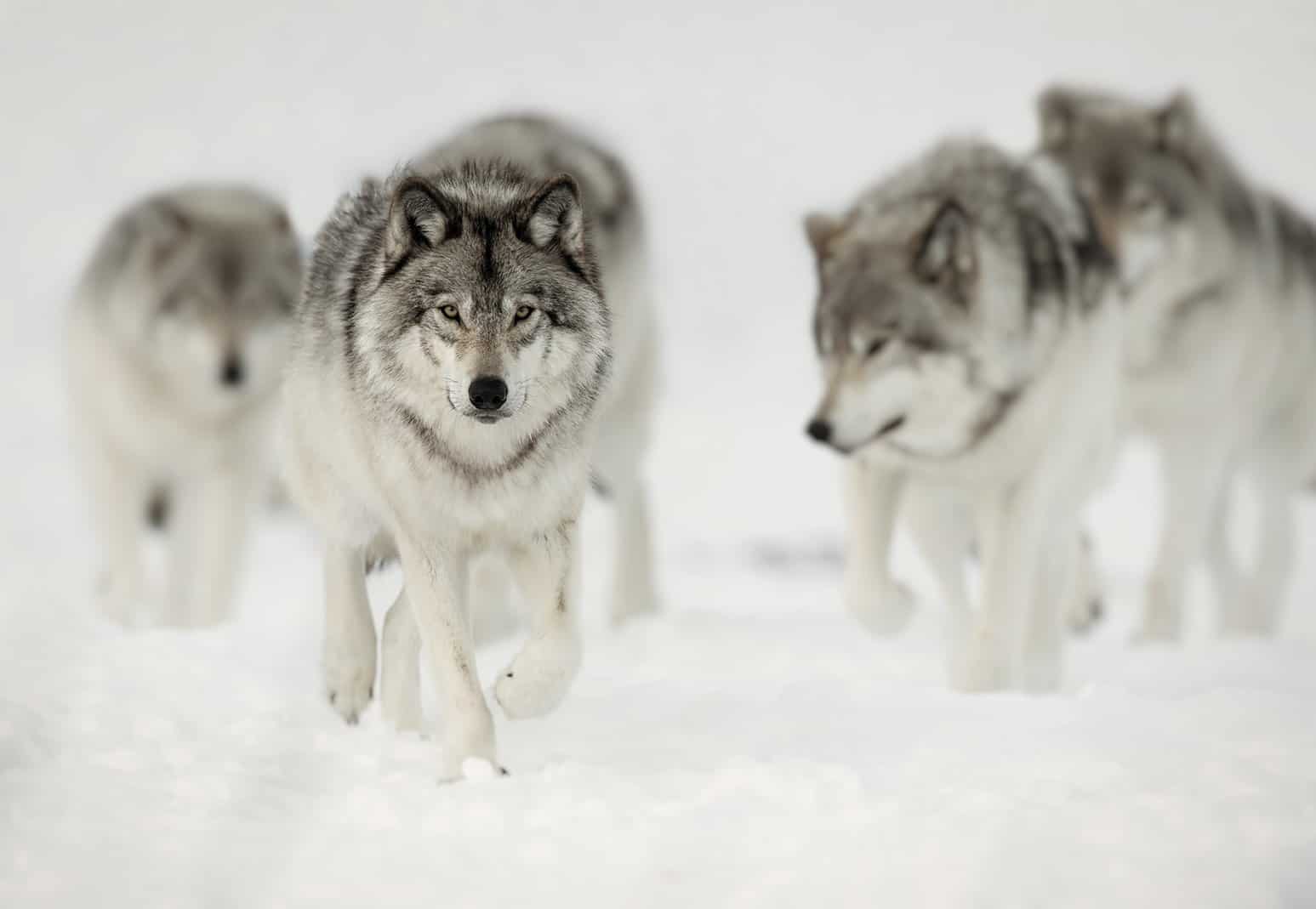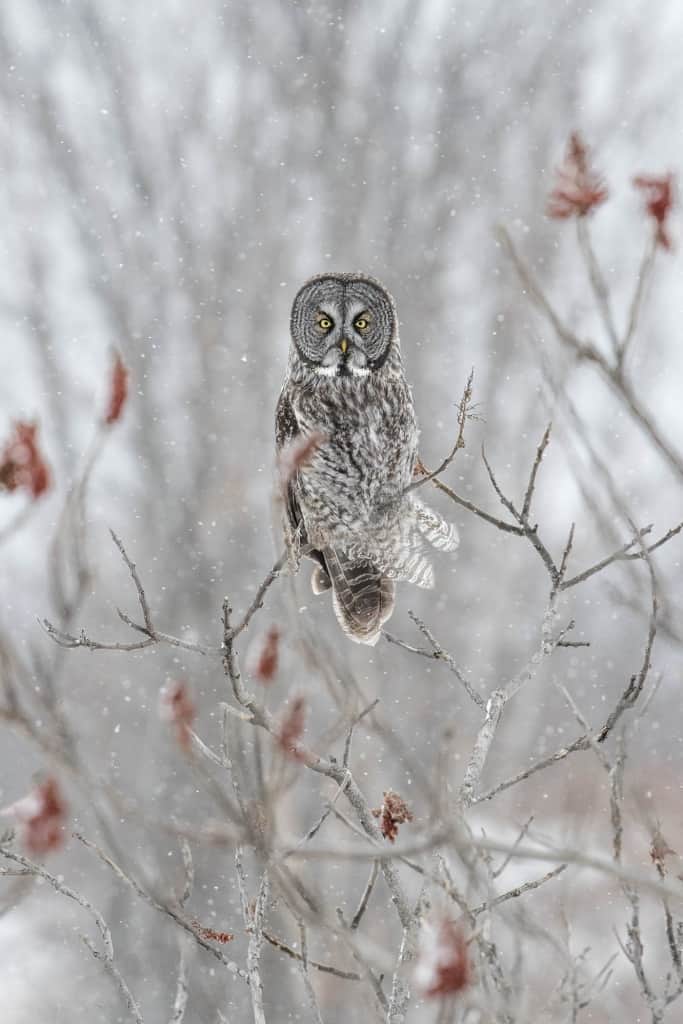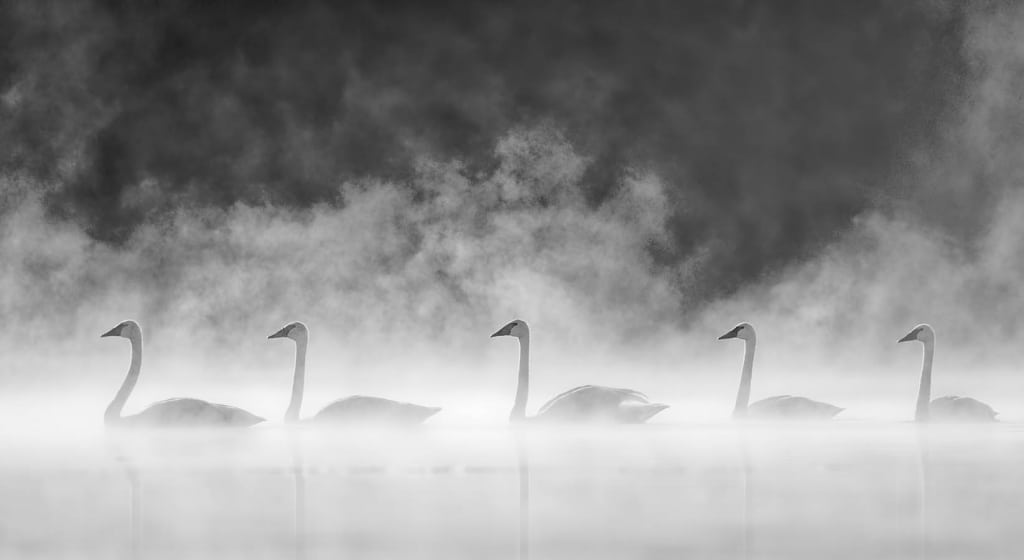
Free Wildlife Photography Competition | Wildlife Photography Composition Tips
Take the time to learn these composition tips for wildlife photography and you will instantly increase your chances of winning photo contests.
Here are 10 tips for what wildlife photography judges are looking for.
How to win a wildlife photography competition.
- The subject’s eyes must always be sharp
- Eliminate distracting elements while shooting and create clean backgrounds
- Review images from past years’ winners to get a sense of what the judges like
- Identify the categories with lower numbers of entries and submit to those
- Submit the maximum number of entries permitted to improve your odds
- Select images that tell a story and evoke a feeling
- Choose images of subjects that are unique or doing something differently
- Consider submitting images with rim, side and backlighting which are less common.
- Read the rules to know what is and is not allowed
- Once you shortlist your images, solicit feedback to get the opinions of others
These tips will help you in selecting your images for submission and move the odds of winning in your favor. However, there are many considerations you need to take into account while shooting so that you create award-winning photo’s and that’s what I will cover next.
These days this is a very competitive landscape, you need to find ways to differentiate your images from the thousands that get entered into any one contest.
I’ve been fortunate to win a few wildlife photography contests over the years. You can view many of those images that have won awards by visiting Coolwildlife Award Winning Images.

By studying images like these you’ll get a better idea of what wildlife photography contest judges are looking for as they select the winning images. As you study the image above, create a list of the things that you think judges would have liked about this photo.
Make your checklist before you head to the bottom of this post to compare your list to mine. Remember there is no right or wrong, this process is very subjective, however, there are a few attributes that carry across most award-winning wildlife images.
I encourage you to make this kind of study of winning images a habit and incorporate those winning ingredients into your own wildlife photos.
You’re going to want to enter as many wildlife photography contests as you can. Just be aware that many of these contests that you will run across are cash grabs with entry fees promising wonderful prizes to the winners.
Free Wildlife Photography Competitions
JoWP Monthly Contest ($250 in 3 Categories)
If you’re looking for legit free wildlife photography competitions there is a free monthly photo contest held by the Journal of Wildlife Photography (JoWP) for its subscribers. There is a different theme each month with a beginner, intermediate and advanced category. Each category winner receives a $500 USD gift certificate to B&H Photo.
JoWP Annual Contest ($6,000 in Prizes)
The Journal of Wildlife Photography also offers an annual free photo contest that is open to all subscribers with $6,000 USD in prizes.
Monthly Feedback Call With Judges
What differentiates both of these contests from others, besides being free, is feedback from the judges on the winning and runner-up images. JoWP subscribers can attend the judge’s live group image critique every month. This provides you with over-the-shoulder insights into how the winning images are selected. Every session is recorded for viewing if you can’t attend the live call.
If you are a beginner to intermediate wildlife photographer this feedback offers you a unique opportunity to hear how professional wildlife photography judges use light, angle, and composition decisions to assess photos and select the winners.
If you wish to participate in these free monthly photo contests and listen to the follow-on critique sessions click on the subscription banner below to become a subscriber of the Journal of Wildlife Photography. By using the link below, you will also receive a free copy of an 82-page eBook entitled, “Mastering Light: The Essence of Wildlife Photography”.
In addition to the monthly photo contest and judge image critique sessions, your subscription to JoWP provides you with these free additional benefits with content provided by professional wildlife photographers:
- Quarterly digital magazine
- Monthly virtual training
- Private social community
Wildlife photography is a captivating genre that allows photographers to capture the beauty and essence of the natural world. The challenge lies in not just photographing animals but also creating visually compelling and emotionally evocative images that resonate with viewers.
One of the key elements that contribute to the success of wildlife photography is composition. In this article, I will delve into the art and science of composition for wildlife photography, exploring various techniques, tips, and examples to help you master the art of creating stunning wildlife images.
Introduction to Composition in Wildlife Photography
Composition refers to the arrangement of elements within a photograph to create a harmonious, balanced, and visually pleasing image. It involves making deliberate decisions about the placement, framing, and relationships between different elements within the frame. In the context of wildlife photography, composition is essential for conveying the story, emotion, and beauty of the animal subjects.
The Importance of Composition
While technical proficiency is crucial in wildlife photography, composition is what elevates a photograph from being ordinary to extraordinary. A well-composed image can communicate the behavior, habitat, and character of the subject, capturing the essence of the animal’s life and environment. Moreover, strong composition can also guide the viewer’s eye, creating a visual journey that leads to a more engaging and impactful viewing experience.
Fundamental Principles of Composition
Rule of Thirds
The rule of thirds is a fundamental compositional guideline that involves dividing the frame into a grid of nine equal segments using two horizontal and two vertical lines. The points where these lines intersect are known as “power points.” Placing key elements, such as the animal’s eyes or a point of interest, along these lines or at the intersections can create a sense of balance and visual interest.
This is precisely what I did with the image of the wolf pack by placing the eyes of the alpha wolf at one of the rule of thirds intersection points.
While the rule of thirds is a great guideline, it does lend itself to me too images so I do encourage you to break away from the rule of thirds to create images with more visual impact when you think it makes sense to do so.
Leading Lines
Leading lines are lines within an image that guides the viewer’s gaze toward a specific point. In wildlife photography, these lines could be natural elements like branches, rivers, or even the curve of an animal’s body. Utilizing leading lines effectively can direct attention to the subject while adding depth and dynamism to the photograph.
This is especially the case with environmental shots where the wildlife is smaller in the frame and you’re including more of the surrounding landscape.
Framing
 Framing involves using elements within the scene to create a natural frame around the subject. This could be an overhanging branch, a rock formation, or even foliage.
Framing involves using elements within the scene to create a natural frame around the subject. This could be an overhanging branch, a rock formation, or even foliage.
Framing not only draws attention to the subject but also adds context and depth to the image.
In this image of the Great Grey Owl, I used the branches of the Sumac and the red tips, leaving out-of-focus open space above the head to frame the owl.
The light snowfall adds an extra dimension providing a sense of what the environment was like when the image was shot.
Negative Space
Negative space is the area around the subject that is empty or less detailed. It can help emphasize the subject by providing a sense of isolation and allowing the viewer’s focus to rest on the animal. Careful use of negative space can evoke emotions and convey a sense of tranquility or vulnerability.
Symmetry and Patterns
Symmetry and patterns can be visually pleasing and calming. Capturing an animal in a symmetrical pose or within a repetitive pattern can create a sense of order and balance. However, breaking away from perfect symmetry can also add a touch of uniqueness and visual interest.
Incorporating the Environment
 Wildlife photography is not just about capturing the animals themselves but also about showcasing their interactions with their natural habitats. Incorporating the environment effectively into your compositions can enhance the storytelling aspect of your images.
Wildlife photography is not just about capturing the animals themselves but also about showcasing their interactions with their natural habitats. Incorporating the environment effectively into your compositions can enhance the storytelling aspect of your images.
Environmental Context
Including elements of the animal’s environment, such as the landscape, plants, or other wildlife, can provide viewers with a deeper understanding of the subject’s lifestyle and habitat. For example, photographing coastal brown bears catching salmon on the tidal flats at the base of a glacier highlights its dependence on a specific ecosystem.
Scale and Perspective
Using the environment to convey a sense of scale and perspective is a powerful compositional tool. Showcasing a small animal against a vast landscape can evoke feelings of grandeur and vulnerability. Conversely, capturing an animal up close can emphasize its intricate details and characteristics.
I used this glacier in Katmai, Alaska as the backdrop for this scene of fishing coastal brown bears to give the viewer a sense of scale.
Capturing Behavior and Action
 Wildlife behavior and action shots can be incredibly dynamic and engaging. Capturing these moments requires anticipation, quick reflexes, and a strong understanding of composition.
Wildlife behavior and action shots can be incredibly dynamic and engaging. Capturing these moments requires anticipation, quick reflexes, and a strong understanding of composition.
Moment of Action
Timing is crucial when capturing moments of action, such as a bird in flight or a predator chasing its prey. Compose your shot to anticipate the movement and ensure that the action unfolds within the frame. Consider using burst mode to increase your chances of capturing the perfect moment.
I’ve waited for years to be in the right place at the right time to capture an osprey catching a fish. I had been shooting loons from my boat at the time and did not have time to adjust for a faster shutter speed to freeze the action so I panned the osprey in flight at the slower shutter speed and was pleased with the sense of action that the image evoked.
Dynamic Angles
Experimenting with different angles can add a dynamic and three-dimensional feel to your images. Shooting from low angles can make the animal appear more imposing, while shooting from eye level can create a personal connection between the subject and the viewer.
Embracing Creativity
 Composition in wildlife photography is not bound by strict rules; it’s an artistic endeavor that allows for creative expression. Don’t be afraid to push boundaries and try unconventional approaches.
Composition in wildlife photography is not bound by strict rules; it’s an artistic endeavor that allows for creative expression. Don’t be afraid to push boundaries and try unconventional approaches.
Silhouettes
Creating silhouettes can be a captivating way to showcase the animal’s distinctive shape and outline. Position the subject between the camera and a strong light source, such as the setting sun, to create a striking silhouette effect.
Normally I would like to have the bear to the left in this scene so there was more room to where he is going. However, by using the sun it allowed me to balance the overall scene in this silhouette.
Minimalism
Sometimes, less is more. Embrace minimalism by isolating the subject against a simple background. This approach can highlight the subject’s beauty and evoke a sense of tranquility.
Preparing for the Shot
 Achieving compelling composition in wildlife photography requires preparation, patience, and a deep understanding of your subject.
Achieving compelling composition in wildlife photography requires preparation, patience, and a deep understanding of your subject.
Very little wind combined with cool Autumn temperatures and warm water on the lake created the backdrop for this image of these five Trumpeter Swans.
All I had to do was find the migrating swans and patiently wait for them to line up behind one another which is a behavior that I have observed many times.
Research and Observation
Knowing the behavior and habits of the animals you’re photographing can greatly improve your chances of capturing unique and meaningful moments. Spend time observing your subjects in their natural habitat to anticipate their actions and movements.
These Trumpeter Swans migrate through in Autumn which just so happens to coincide with cooler nights. With the water temperature still being warm a magical fog envelopes the landscape when the winds are not present. By looking at the weather forecast the night before I was able to predict the fog that appears in this image.
Patience and Persistence
Wildlife photography often involves waiting for the right moment to occur. Patience is key to capturing behaviors, interactions, and expressions that tell a story. Be prepared to spend long hours in the field, waiting for the perfect opportunity.
I waited eight hours in my boat from a distance for this loon chick to be born. My goal was to capture the loon chicks while they were still on land with the adults. This is a very short window, as soon as the second egg hatches the family takes to the water and does not return to the nest.
Post-Processing and Composition
 The role of composition doesn’t end when you press the shutter button. Post-processing is an essential step in enhancing your images’ visual impact.
The role of composition doesn’t end when you press the shutter button. Post-processing is an essential step in enhancing your images’ visual impact.
It pays to spend time creating a go-to workflow for your wildlife photography.
For those of you interested in learning more about wildlife image editing workflows check out my video on Wildlife Photography Editing Workflow for RAW images.
In addition to using your stock image editor such as Adobe Lightroom or Photoshop, Capture One and the like, I urge you to investigate and trial third-party applications such as DxO PureRAW3.
The DxO software is the first step in my wildlife photography workflow. It does an excellent job of auto-correcting many elements in an image using artificial intelligence algorithms from 10’s of thousands of images.
Here’s a link to a free 30-day trial of DxO PureRAW3 so you can take it for a test drive using your own wildlife images.
Cropping and Framing
During post-processing, you have the opportunity to fine-tune your composition by cropping and framing. Experiment with different cropping ratios and compositions to highlight specific elements and achieve the desired visual balance.
Adjusting Contrast and Color
Manipulating contrast and color can further emphasize the subject and enhance the overall mood of the image. Use these adjustments strategically to guide the viewer’s eye and evoke specific emotions.
Learning from Master Wildlife Photographers
Learning the tricks of the trade from renowned wildlife photographers can provide invaluable insights into effective composition techniques. For beginners and intermediate wildlife photographers taking a course like Simon d’Entremont’s Wildlife Photography Essentials is a great way to learn everything you need to know about wildlife photography.
To watch Simon’s video introduction to the course and get additional details head on over to the Wildlife Photography Essentials Course landing page.
Analyzing The Work of Masters

Examine the compositions of master photographers to understand how they use techniques like leading lines, framing, and negative space to create captivating images. Pay attention to how they balance the subject with its environment and capture moments of action.
Finding Inspiration
While it’s essential to learn from others, don’t be afraid to develop your unique style and approach. Draw inspiration from different sources, including art, literature, and even your personal experiences, to create compositions that reflect your vision.
You Be The Judge
It’s time to review your checklist from the exercise I challenged you with to identify the attributes that make this image a winner. This image was selected for the Canadian Geographic Best of Wildlife Photography Magazine in 2015.
- The first thing judges look for in a wildlife image is for the eye to be sharp.
- Next is the composition, the owl is clearly about to pounce directly below his sightline however it was important to give the owl some space in front.
- Third on my list is exposure. Not only is the owl exposed properly, but the snow is also rendering the shadows and detail to provide a 3D look.
- The image captures the moment of action. The snow coming off the feet lets the viewer know the owl just jumped.
- A sense of environment is created by the falling snow and out-of-focus forest.
- This photo presents a story, one of an owl hunting for prey beneath the snow
Those are the items that made my list, did you have others? If yes, leave me a comment and let me know.

Conclusion
Composition is a cornerstone of successful wildlife photography. It empowers photographers to tell compelling stories, capture fleeting moments, and evoke emotions through their images. By understanding and applying the fundamental principles of composition, incorporating the environment, capturing behavior and action, embracing creativity, and refining your skills through practice, you can elevate your wildlife photography to new heights.
Remember that composition is a continuous journey of learning and experimentation, and each photograph you create contributes to your growth as an artist and storyteller in the world of wildlife photography.




